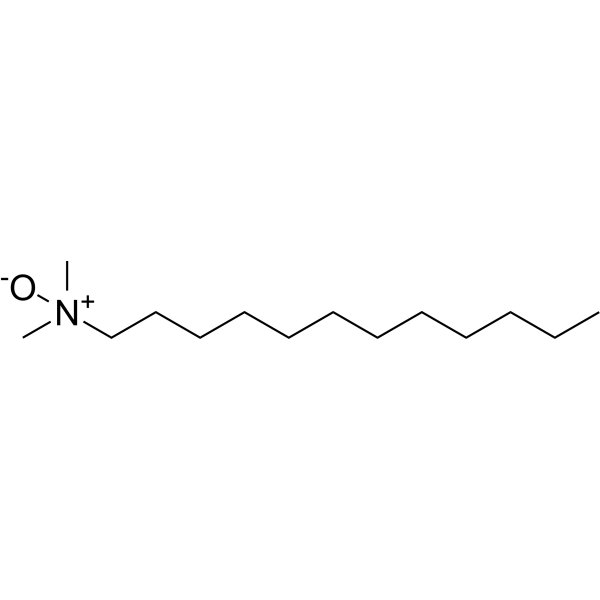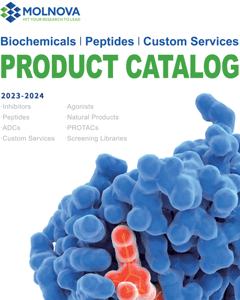
Lauramine oxide
CAS No. 1643-20-5
Lauramine oxide( Refan | Dimethylaurylamine oxide | LDAO | Lauryldimethylamine oxide )
Catalog No. M27347 CAS No. 1643-20-5
Lauramine oxide is effective against common bacteria such as E. coli and S. aureus, however it is non-denaturing and may be used to solubilize proteins.
Purity : >98% (HPLC)
 COA
COA
 Datasheet
Datasheet
 HNMR
HNMR
 HPLC
HPLC
 MSDS
MSDS
 Handing Instructions
Handing Instructions
| Size | Price / USD | Stock | Quantity |
| 500MG | 26 | In Stock |


|
| 1G | Get Quote | In Stock |


|
Biological Information
-
Product NameLauramine oxide
-
NoteResearch use only, not for human use.
-
Brief DescriptionLauramine oxide is effective against common bacteria such as E. coli and S. aureus, however it is non-denaturing and may be used to solubilize proteins.
-
DescriptionLauramine oxide is effective against common bacteria such as E. coli and S. aureus, however it is non-denaturing and may be used to solubilize proteins.
-
In Vitro——
-
In Vivo——
-
SynonymsRefan | Dimethylaurylamine oxide | LDAO | Lauryldimethylamine oxide
-
PathwayGPCR/G Protein
-
TargetAntibacterial
-
RecptorAChR|BChE|Calcium Channel|cAMP|Parasite|DPPH
-
Research Area——
-
Indication——
Chemical Information
-
CAS Number1643-20-5
-
Formula Weight229.408
-
Molecular FormulaC14H31NO
-
Purity>98% (HPLC)
-
SolubilityIn Vitro:?DMSO : 100 mg/mL (435.92 mM)
-
SMILESCCCCCCCCCCCC[N+](C)(C)[O-]
-
Chemical Name——
Shipping & Storage Information
-
Storage(-20℃)
-
ShippingWith Ice Pack
-
Stability≥ 2 years
Reference
1.Nasrullah AA, et al. Antiplasmodial alkaloids from the bark of Cryptocarya nigra (Lauraceae). Molecules. 2013 Jul 8;18(7):8009-17.
molnova catalog



related products
-
1,3-DIMETHYL-2-OXO-2...
1,3-DIMETHYL-2-OXO-2,3-DIHYDRO-1H-BENZIMIDAZOLE-5-CARBALDEHYDE
-
Ceftobiprole medocar...
Ceftobiprole medocaril is the parenteral prodrug of Ceftobiprole. Ceftobiprole is a broad-spectrum cephalosporin with activity against Methicillin-resistant staphylococcus aureus (MRSA).
-
DS-2969b
DS-2969b (DS 11960558) is a novel orally active GyrB inhibitor, inhibits the supercoiling activity of C. difficile DNA gyrase with IC50 of 20 ng/mL.



 Cart
Cart
 sales@molnova.com
sales@molnova.com


